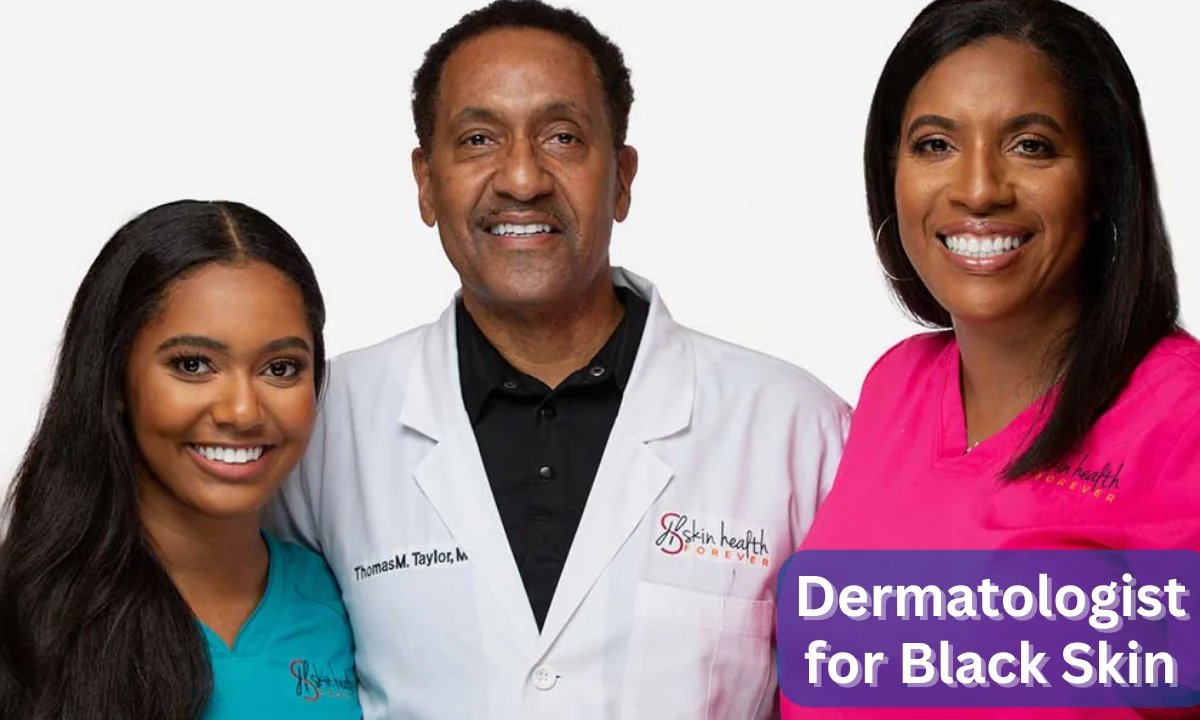“How many black dermatologists are there? Discover 4 shocking facts and insights about the number and representation of black dermatologists in the medical field.”
Introduction:
Identifying as Black or of African heritage, a Black dermatologist is a physician who focuses on skin health. Their expertise includes diagnosing and treating a wide range of skin diseases, especially those that impact those with darker skin tones. Since many skincare products and treatments are made for lighter skin. Black physicians are sympathetic to their patients’ particular demands and concerns. Their knowledge is essential for treating Black people’s health inequities and delivering quality care.
How many black dermatologists are there?
Specifically, there is a critically small number of Black dermatologists in the United States, as only three percent of the practicing dermatologists are Black. This percentage is, however, lower than the approximately 13% Black population in the United States of America, a clear suggestion of the disparities in the specialty of dermatology in this nation.

This underrepresentation has profound implications for the ability of Black patients to access quality dermatological care because of the specific and rare skin disorders they often present with.
Demographics and Practice Characteristics
The last cross-sectional study looked into the practice features of 221 reported Black dermatologists and determined that there are only 1.8% of all dermatologists in the National File. Key findings include:

Gender Representation: Categorically, the percentages of Black and non-Black female dermatologists looked like this: 80.1% of Black dermatologists and 51.1% of non-Black dermatologists, respectively.
Geographic Distribution: About 45 percent of them work in the southern part of the United States, and they are found more often in solo practices and in academic affiliations.
Patient Demographics: Black dermatologists are able to see a larger share of non-Hispanic Black Medicare beneficiaries (21.7%) than their non-Black counterparts (2.7%) and work in ZIP codes with a higher Black resident population density.
Such characteristics imply that Black dermatologists have an indispensable role in managing the health issues of minorities, especially those who may not access these services easily.
- How to Cancel My Planet Fitness Membership in 2025
- How many calories should I eat to lose weight?
- How many mental health professionals are in the US?
- Skin Care During Winter: 7 Essential Tips to Keep Your Skin Healthy
- How did Elon Musk lose weight so fast? 5 Secrets – You Won’t Believe What He Did!
- How Does Weight Loss Affect Your Face? 6 Unexpected Effects
- Does Baking Soda Kill Dandruff? 5 Proven Methods Explained
- Which Yoga Is Best for Beginners? 6 Easy Poses to Start With
- Are Exercise Bikes Bad for Your Knees? Experts Reveal 3 Insights
- Are Workout Apps Worth It? 5 Unexpected Benefits Revealed
- Can You Repair Hair Follicles? Discover the 5 Best Treatments
- How many yoga studios in the US? Shocking Fact – 42,000+ Studios
Barriers to Entry and Recruitment Efforts
Dermatology is one of the most challenging specialties to get into, and even fewer Black or African Americans: 65 among 796 applicants for dermatology residencies in 2020. The above competition, combined with other forms of systemic discrimination for minorities in medical school, including having low grades, contributes to the shortage of Black professionals in this specialty.
To combat this issue, initiatives like the Pathways. The Launched Inclusivity in Dermatology program have the goals of diversifying participants, starting from high school students and coming through medical schools. The target is to grow the population of people from these communities substantially by the year 2027.
Implications for Patient Care
The absence of dermatologist diversity has pervasive adverse effects on health disparities. For example, research has shown that minority patients who visit doctors of the same color concordantly have better compliance with their medical prescriptions than patients who are attended by other-colored doctors, which is important in managing skin ailments common in Blacks. Moreover, diagnostic problems occur if dermatologists do not receive information about different conditions of dark skin types, thereby risking inadequate diagnoses or late treatments.
Conclusion
The present condition shows the necessity of further growth of the number of Black dermatologists in the field. To close this gap, medical schools and professional associations need to continue to work collectively to support diversity. Having a systems approach to recruitment and building stronger support for current practitioners will improve the care for all patients.
How many Black dermatologists are there in the US?
At present, there are about 221 Black dermatologists in the United States, of which 3% identify as Black. This percentage is much lower than the Black people’s proportion in the United States of America, which stands at 13%.
Who was the first Black dermatologist?
Theodore Kenneth “T.K.” Lawless, MD, was a well-known dermatologist who was among the first to use radium to treat cancer and helped develop methods for treating syphilis. Dr. Lawless became a millionaire after accumulating his fortune over many years and being honored for his important philanthropic initiatives.
Who is the world’s best dermatologist?
Choosing the world’s best dermatologist is not easy, as it depends on the various factors that are being addressed. However, some of them are Dr. Susan C. Taylor, who focuses on the skin of color. Another is Dr. Corey L. Hartman, a renowned dermatologist who has contributed a lot regarding education and has been advocating for diversity.
How many Black doctors are there in the US?
Currently, Blacks account for approximately 5% of all the physicians in the USA. This statistic shows that there are still many problems regarding diversity in the processes of education and practice of medicine and how it remains a challenge for Black people entering into various specialties, including dermatology, the root causes remain systemic.

